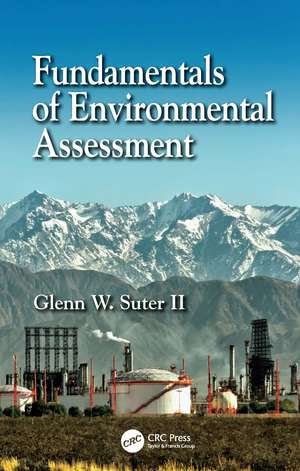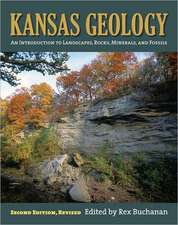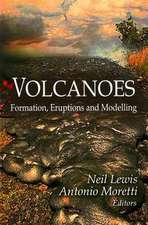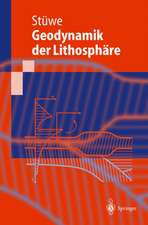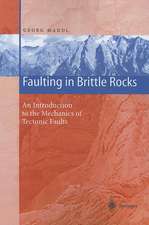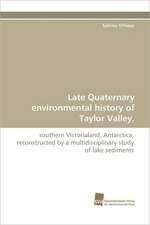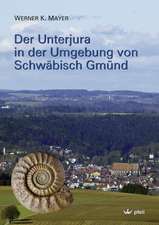Fundamentals of Environmental Assessment
Autor Glenn W. Suter IIen Limba Engleză Hardback – 14 iun 2023
Features
- Integrates human health and ecological assessments.
- Includes epidemiological, risk, causal, impact, and outcome assessments.
- Focuses on fundamental principles that are applicable in all nations and legal contexts.
- Employs an engaging style and draws on the author’s practical experience.
- Explains fundamental concepts in short chapters, making it perfect for beginners in the field.
- Explains the challenges and rewards of a career in environmental assessment.
Preț: 649.14 lei
Preț vechi: 713.34 lei
-9% Nou
Puncte Express: 974
Preț estimativ în valută:
124.21€ • 135.35$ • 104.67£
124.21€ • 135.35$ • 104.67£
Carte disponibilă
Livrare economică 02-16 aprilie
Livrare express 18-22 martie pentru 38.87 lei
Preluare comenzi: 021 569.72.76
Specificații
ISBN-13: 9780367705923
ISBN-10: 0367705923
Pagini: 322
Ilustrații: 8 Tables, black and white; 2 Line drawings, color; 23 Line drawings, black and white; 3 Halftones, color; 5 Illustrations, color; 23 Illustrations, black and white
Dimensiuni: 156 x 234 x 23 mm
Greutate: 0.69 kg
Ediția:1
Editura: CRC Press
Colecția CRC Press
ISBN-10: 0367705923
Pagini: 322
Ilustrații: 8 Tables, black and white; 2 Line drawings, color; 23 Line drawings, black and white; 3 Halftones, color; 5 Illustrations, color; 23 Illustrations, black and white
Dimensiuni: 156 x 234 x 23 mm
Greutate: 0.69 kg
Ediția:1
Editura: CRC Press
Colecția CRC Press
Public țintă
Postgraduate, Professional, and Undergraduate AdvancedCuprins
Part I: Types and Components of Environmental Assessments 1. Types of Environmental Assessment 2. The Cast of Characters 3. Frameworks for Environmental Assessment 4. Planning and Problem Formulation 5. Analysis 6. Analysis of Exposure 7. Analysis of Effects 8. Characterization 9. Communication 10. Pollution Control and Risk Management Part II: Concepts of Environmental Assessment 11. Causation 12. Hazard 13. Integration of Human Health and Ecological Assessments 14. Goals and Endpoints 15. Precaution and Protection 16. Levels of Organization 17. Uncertainty, Variability and Confidence 18. Probalistic Assessment 19. Complexity 20. Bias, Error, Fraud, and Credibility Part III: Methods for Environmental Assessment 21. Sources of Information 22. Benchmark Derivation 23. Network Diagrams 24. Inference 25. A Weight of Evidence Process 26. Extrapolation 27. Species Sensitivity Distributions 28. Mixtures, Multiple Agents, and Cumulative Effects 29. Background and Reference 30. Assessors in the Court Room 31. The Future Part IV: Supporting Materials
Notă biografică
Glenn W. Suter II is a retired environmental assessor. During his 20 years at the U.S. Environmental Protection Agency, he served as the Science Advisor to the Director of the National Center for Environmental Assessment in Cincinnati and as Chairman of the Risk Assessment Forum’s Ecological Oversight Committee. Before that he worked for 23 years in the Environmental Sciences Division of Oak Ridge National Laboratory. He has authored more than 300 publications including four authored books and four edited books. Among his recognitions, he received the SETAC Founder’s Award and the USEPA’s Level One Scientific Achievement Award, and gold medal for exceptional service. He is a Fellow of the AAAS and SETAC. He has worked on the development of toxicity test protocols; environmental impact assessment for nuclear, geothermal and coal energy technologies; the National Acid Precipitation Assessment; recovery of an endangered species; and ecological risk assessments of contaminated sites and of the mining of copper and coal. He participated in the development of guidance for ecological risk assessment, causal assessment, weight of evidence, field-based water quality criteria, assessment endpoints, ecosystem services, integrated risk assessment, and other topics. After this book, he intends to continue to serve as reviews editor for IEAM and spend more time clearing invasive species and otherwise restoring his bit of mixed deciduous forest.
Recenzii
“The topics in Suter's book have been covered in other textbooks. But this book stands out and is distinguished from all others by a plain‐spoken writing style. Reading the book, you get the distinct impression that Suter is communicating directly with you. He is sharing advice drawn from his many years of experience assessing a wide range of environmental situations, some quite controversial to the present day. The book is an excellent teaching tool for students at university. And it's a useful and practical reference guide for early‐and mid‐career environmental professionals who want to understand the challenges and purposes of environmental assessments and their application to environmental management and decision‐making.”
- Richard J. Wenning, Integrated Environmental Assessment and Management, Vol 19, No 6, 2023: 1652–1658
- Richard J. Wenning, Integrated Environmental Assessment and Management, Vol 19, No 6, 2023: 1652–1658
Descriere
This principles-based textbook is essential for different levels of students, as well as new practitioners who want to understand the purposes of environmental assessments and how to achieve them. It includes environmental risks to humans as well as nonhuman populations and ecosystems, and most types of environmental assessments.
